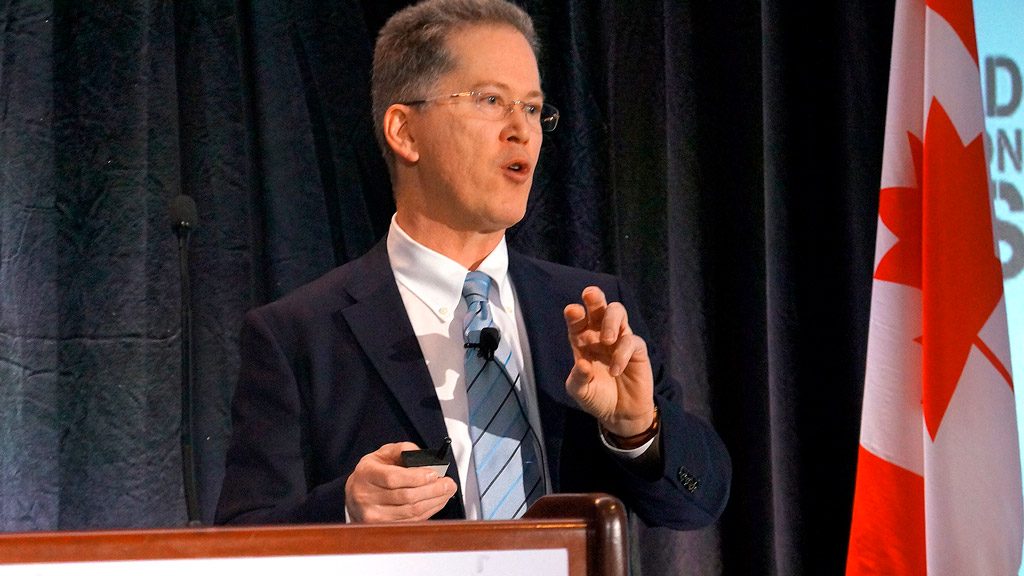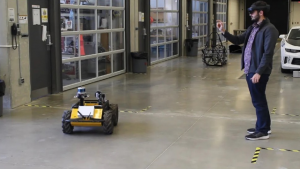A University of Waterloo professor argues that statistics concluding the construction industry has recorded low production output gains over the decades are unfair.
That moniker fails to note seminal periods in the industry’s evolution. Take the shift from cable-actuated to hydraulic road-building equipment that saw production increases of “several hundred times” in the 1950s, said Carl Haas, the interim chair of the department of civil and environmental engineering at the University of Waterloo.
A more recent example is the automated site layout laser station — “a huge productivity improvement and a huge improvement” in the reduction of the risk of rework, he said.
Haas gave a seminar titled Adapting to New Technology and Innovation in Construction at the recent 18th annual Ontario Construction Secretariat’s (OCS) State of the Industry and Outlook Conference in Toronto.
He told delegates only recently the U.S. Bureau of Labor Statistics started measuring productivity output in the industry and it now pegs the compound annual rate for labour productivity improvements in the industrial sector at “well over four per cent” in the past decade.
Why the production boost? Haas attributes it largely to new technologies including robotics/automation, new materials and building methods. Worker training initiatives are another factor.
Emerging artificial intelligence is already used commercially for automated earned value tracking in concrete and steel construction, he pointed out.
For mechanical, electrical and plumbing processes scan-to-BIM (building information modeling) and scan versus BIM technologies ensure that everything is routed where it is supposed to be, Haas said.
Automated building to 3-D is the “next big thing,” he told the audience, explaining that a building is constructed first in virtual reality and then built the way it was designed.
Motion sensor suits that track worker movements are another innovation that can help improve production output and reduce injury. Recently, Haas participated n a study of 50 masons with various skill levels wearing motion suits while building walls. Conclusions showed experienced masons are 2.5 times more productive than novices and third-year apprentices are the most injury prone group, possibly because they are under pressure to keep up, he said.
Other examples of new materials and technologies raising productivity levels include sustainable warm-mix asphalt and organic bricks and automated business process workflows for change requests, Haas told delegates.
He said wearable bioengineered exoskeleton devices that reduce physical stress during work are coming to the construction industry. They are already accepted in industries ranging from automobile manufacturing to shipbuilding.
While exoskeleton technology can be expensive ($20,000 or more), Haas said for a “really skilled worker with physical issues” who is, otherwise, two to three times more productive than an average worker, the suit might be a smart investment.
In a panel session at the OCS conference on new technology in construction, Brandon Bird, CEO, Bird Mechanical, told delegates while technologies like BIM are important to the industry, all of a project’s players have to participate “or your model might be useless.”
One issue keeping BIM from reaching its full potential is a legal one, said panellist Walter Koppelaar, CEO of Walters Inc.
“There is this feeling that the model has an amorphous nature to it. Yes, I approved it yesterday but what if tomorrow you change it and I still have my approval on it?”
Koppelaar said one way of making the industry more productive is for trades to integrate their activities.
He told the panel it is difficult to determine if a new technology will pay off at first. Its importance sometimes is that it teaches a company new ways to do business.
Calling Walters Inc. an “early adopter” of new technology, he said the company switched its entire office over to 3-D detailing in 1995.
M. Sullivan & Son Limited — a general contractor in business since 1914 — may not always be up to speed on all of the latest technology, but it still self-performs about 10 per cent of its jobs, said panellist Marty Smith, general manager. He sees production improvements resulting from project management software.
On another front, Haas sees more buildings being adapted for reuse and fewer buildings demolished.
“It is good for the economy and good for our industry” because adaptive reuse projects require “a lot more labour but a lot less materials and machinery,” he said.











Recent Comments
comments for this post are closed